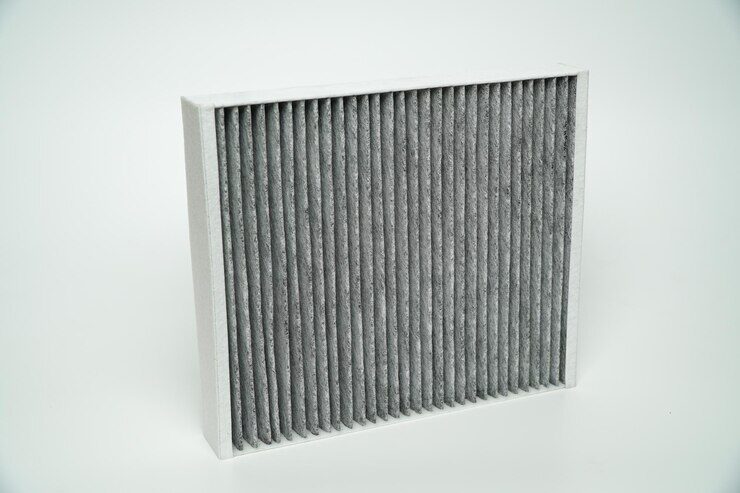Hey there, fellow homeowners! If you’re like me, you probably don’t give much thought to your air conditioning filter until it’s clogged up and your AC is wheezing like it’s climbed Mount Everest. But fear not! Today, we’re diving headfirst into the world of standard AC filter sizes. Strap in, folks, because we’re about to clear the air on everything you need to know.
What’s the Big Deal About AC Filters Anyway?
Okay, let’s start with the basics. You know that meshy thing in your AC unit that looks like it’s been collecting dust since the Stone Age? Yep, that’s your filter. Its job? To catch all the gunk, dust, and debris floating around in your air and prevent it from clogging up your system.
Why Size Matters
Now, here’s where things get interesting: filter sizes aren’t one-size-fits-all. Nope, they come in a variety of shapes and dimensions, kind of like puzzle pieces. And just like trying to force the wrong puzzle piece into place, using the wrong-sized filter can spell disaster for your AC system.
Cracking the Code: Understanding Filter Dimensions
So, how do you know which filter size is right for your AC unit? Well, it’s all about cracking the code of filter dimensions. You’ll typically see filter sizes listed in inches, with three numbers like this: 20 x 20 x 1.
Deciphering the Numbers
The first two numbers represent the length and width of the filter, while the third number denotes the thickness. So, in our example, we’re looking at a filter that’s 20 inches long, 20 inches wide, and 1 inch thick. Easy peasy, right?
Must Read: Secure Coding Practices: Mitigating Vulnerability and Ensuring Software Security
Common Standard Sizes
Now, let’s talk about the most common standard filter sizes you’re likely to come across:
1. 20 x 20 x 1
2. 16 x 20 x 1
3. 20 x 25 x 1
4. 14 x 20 x 1
These bad boys cover the majority of residential AC units out there, but keep in mind that there are plenty of other sizes floating around in the wild.
Why Size Matters (Again)
I know, I know, we already touched on this, but it’s worth repeating: using the wrong-sized filter can wreak havoc on your AC system.
Too Small? Too Bad
If your filter is too small, it won’t be able to cover the entire intake area of your AC unit. That means all those pesky particles and allergens will slip right through the cracks and into your system, causing all sorts of issues down the line.
Too Big? No Bueno
On the flip side, using a filter that’s too big might seem like a good idea at first (hey, more surface area to catch those dust bunnies, right?), but it can actually restrict airflow and put unnecessary strain on your system. Plus, trying to squeeze a larger filter into a space meant for a smaller one is a recipe for disaster.
Finding the Perfect Fit
So, how do you find the Goldilocks filter that’s just right for your AC unit? Well, you’ve got a few options:
1. Check the Manual: Believe it or not, those little booklets that come with your appliances actually contain useful information! Take a peek at your AC unit’s manual to see if it specifies the correct filter size.
2. Measure Twice, Buy Once: When in doubt, whip out the tape measure and get to work. Measure the length, width, and thickness of your current filter to ensure you’re getting the right size.
3. Consult the Pros: If all else fails, don’t hesitate to reach out to an HVAC professional for guidance. They deal with this stuff day in and day out, so they’ll be able to point you in the right direction.
Upgrading Your Filter Game: Exploring Specialty Options
So, you’ve mastered the art of standard AC filter sizes—but what if you’re looking to take your filtration game to the next level? Enter: specialty filters. These bad boys go above and beyond your run-of-the-mill filters to target specific air quality concerns and provide enhanced filtration for your home.
HEPA Filters: The Gold Standard
If you’re serious about improving indoor air quality, HEPA (High Efficiency Particulate Air) filters are where it’s at. These ultra-fine filters are capable of capturing 99.97% of particles as small as 0.3 microns, including pollen, pet dander, and even some viruses. While they may come with a higher price tag, the investment is well worth it for those with allergies, asthma, or other respiratory issues.
Activated Carbon Filters: Banishing Odors and VOCs
Got lingering odors or volatile organic compounds (VOCs) wafting through your home? Activated carbon filters are your secret weapon. These filters are specially designed to absorb odors and harmful chemicals, leaving your home smelling fresh and clean. They’re particularly effective in kitchens and areas with high levels of indoor air pollution.
Electrostatic Filters: Zap Those Particles
Looking for a filter that packs a punch? Electrostatic filters use static electricity to attract and trap airborne particles, making them incredibly efficient at capturing dust, pollen, and other allergens. Plus, they’re reusable—simply wash and dry them periodically to keep them in tip-top shape.
Must Read: All The Basics Of The FTSE 100 FintechZoom Investors Guide
UV-C Air Purifiers: Taking Filtration to the Next Level
For the ultimate in air purification, consider adding a UV-C air purifier to your HVAC system. These devices use ultraviolet light to destroy airborne pathogens like bacteria, viruses, and mold spores, providing an extra layer of protection for you and your family. While they won’t replace traditional filters altogether, they’re a powerful tool in the fight against indoor air pollution.
Wrapping It Up
And there you have it, folks! A crash course in standard AC filter sizes that’ll have you breathing easy in no time. Remember, when it comes to filters, size does matter, so don’t skimp on finding the perfect fit for your AC unit. Your system (and your sinuses) will thank you later!


